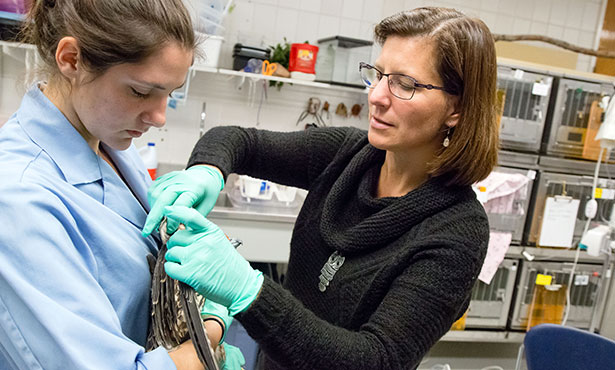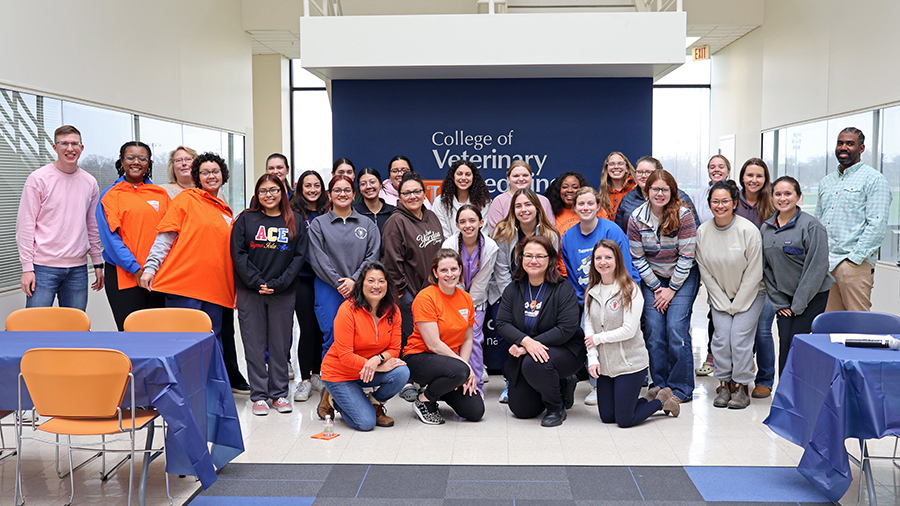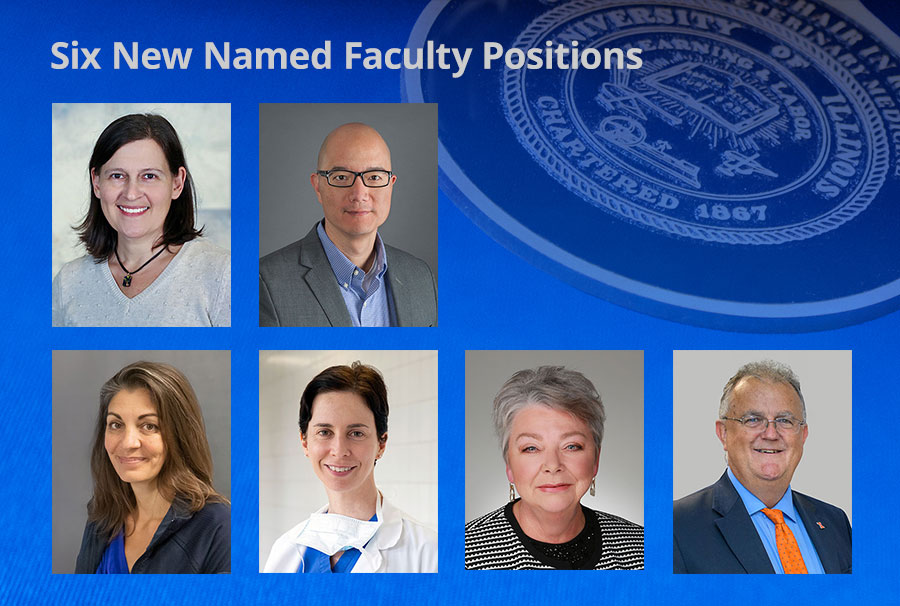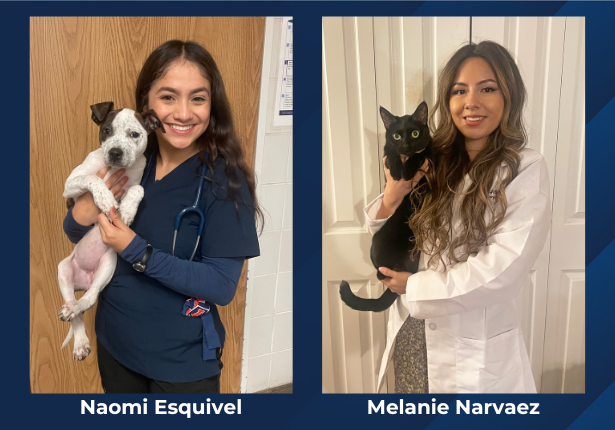‘We are Improving Lives for all our customers’
[row][column size=”5″]
In November the role of chief of staff at the Veterinary Teaching Hospital transitioned from veterinary oncologist Dr. Laura Garrett to Dr. Julia Whittington, of the zoological medicine service. Dr. Garrett had held the chief of staff position, which is a half-time appointment carried out while continuing clinical service and teaching commitments, since the role was established in 2015. The college is grateful to Dr. Garrett for her leadership during a period of restructuring in hospital governance.
Following is a synopsis of the white paper presented by Dr. Whittington on her “vision and road map” for the hospital.
[/column][column size=”7″]
[callout title=”Fast Facts about Dr. Whittington”]
- First affiliated with the University of Illinois in 1983 as a student; in 1986 she joined the campus police force
- Earned her bachelor’s degree in Ecology, Ethology, and Evolution at U of I in 1993 and her DVM in 1997
- Served as Wildlife Medical Clinic (WMC) ward manager while a student
- Hired as a faculty member in 2001, when she became director of the WMC and started the in-house zoological medicine service
- Promoted to Clinical Professor in 2017
As WMC director Dr. Whittington is responsible for patient care, student instruction, curriculum development, budgetary decisions, financial planning, revenue generation, facilities maintenance, capital requests, and outreach. In 2017, WMC received over 2,000 patients, which were cared for by around 120 veterinary and undergraduate students working together in peer-mentored teams under faculty guidance.
[/callout]
[/column][/row]
One sentence from the hospital website contains our mission and purpose: “Simply put, the hospital is dedicated to improving lives: by providing exceptional patient care, by serving animal owners and veterinarians, by advancing veterinary education, and by developing innovative health solutions.”
When the college crafted the 2016-2020 Strategic Plan, I chaired the subcommittee for “Goal 3: Make a significant and visible societal impact.” Goal 3 establishes the vision for the Veterinary Teaching Hospital within the college:
- We will deliver outstanding clinical and diagnostic services through recruitment, mentoring, and promotion of exceptional personnel.
- We will support our core veterinary specialties and ancillary services while highlighting current areas of strength.
- We will strive for state-of-the-art facilities to provide these services.
The Veterinary Teaching Hospital has a long tradition of excellence in service. We have seen the elimination of core services, and have regrown them. We have evolved to meet the needs of a challenging new curriculum, taking on the lion’s share of the teaching commitment. We have persevered in the face of shrinking budgets, and we are growing.
The strength of the Veterinary Teaching Hospital is its people. We have recruited and hired an incredibly talented faculty who are working diligently to grow clinical services, share their passion through teaching, and advance veterinary science through innovative scholarship. These faculty are the foundation of the hospital.
Our staff members are equally important. Without them, the hospital could not function. It is only through the dedication and commitment of these individuals that the faculty succeed.
Finally, there is no reason for the hospital without student instruction. The students are our No. 1 customer. They are our passion, our livelihood, our future, our colleagues.
The VTH is struggling with limitations in its physical resources. … These are growing pains, and ultimately are to be expected and celebrated. Without them, we would not have inducement for change. But change does not come cheaply or easily. As we make these changes, we will keep our purpose in mind and trust that “Improving Lives” means that we will support each other’s needs and programs that are in the best interest of the VTH.
The role of the VTH leader is to facilitate these changes, to champion the mission and purpose, with an eye always on the larger vision of what we want to become. The chief of staff is the individual charged with leading these efforts on behalf of the whole. That is my commitment to this role.
The University of Illinois Veterinary Teaching Hospital is already exceptional, and our pride in this institution should be reflected in our work, our attitude, our interactions, our products. We are “Improving Lives” for all our customers; students, clients, and referring veterinarians.




